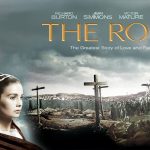The Hobbit: An Unexpected Journey (2012)

Released in 2012, “The Hobbit: An Unexpected Journey,” directed by Peter Jackson, serves as the first installment in a grand three-part cinematic adaptation of J.R.R. Tolkien’s beloved fantasy novel, The Hobbit. This film marks Jackson’s return to the rich world of Middle-earth, following his critically acclaimed The Lord of the Rings trilogy. With its epic scale and immersive storytelling, “An Unexpected Journey” continues to captivate audiences and reaffirms Jackson’s expertise in bringing Tolkien’s intricate universe to life.
“The Hobbit: An Unexpected Journey” introduces audiences to Bilbo Baggins, played by Martin Freeman, a hobbit living a quiet and uneventful life in the Shire. Bilbo’s world is turned upside down when the wizard Gandalf (Ian McKellen) and a band of thirteen dwarves, led by Thorin Oakenshield (Richard Armitage), arrive at his doorstep. They seek Bilbo’s help in their quest to reclaim their homeland, the Lonely Mountain, and its vast treasure from the fearsome dragon Smaug.
The film opens with Bilbo’s reluctance and eventual acceptance of the adventure, setting the stage for a journey that will take him across a fantastical world filled with danger and wonder. The quest is not just a physical journey but also a significant personal transformation for Bilbo, who evolves from a cautious and comfort-seeking hobbit into a brave and resourceful hero.
Peter Jackson’s direction in “An Unexpected Journey” is marked by his meticulous attention to detail and his ability to create a visually stunning and immersive experience. The film is notable for its use of advanced visual effects and high-definition technology, including the use of 48 frames per second (HFR), which aims to provide a clearer and more lifelike depiction of Middle-earth.
The film’s cinematography, led by Andrew Lesnie, captures the breathtaking landscapes of New Zealand, which stand in for the fictional world of Middle-earth. From the lush green hills of the Shire to the rugged terrain of the Misty Mountains and the eerie depths of Goblin Town, the visual richness of the film enhances the epic nature of the story.
The design of the various fantastical elements, including the elaborate sets, costumes, and creature designs, reflects a high level of craftsmanship. The portrayal of characters such as Gollum (played by Andy Serkis through motion capture) and the various fantastical creatures encountered by Bilbo and his companions is both detailed and imaginative.
The character development in “An Unexpected Journey” is a strong element of the film, particularly in the case of Bilbo Baggins. Martin Freeman’s portrayal brings a sense of relatability and depth to the character, showcasing Bilbo’s growth from a reluctant adventurer into a key player in the epic quest. Freeman’s performance captures the essence of Bilbo’s inner conflict and bravery, making his journey compelling and emotionally resonant.
The supporting cast, including Ian McKellen as Gandalf and Richard Armitage as Thorin Oakenshield, delivers powerful performances that anchor the film’s narrative. Gandalf’s wisdom and enigmatic presence contrast with Thorin’s fierce determination and sense of duty, creating a dynamic interplay between characters that drives the story forward. The ensemble cast, including actors such as Cate Blanchett (Galadriel), Hugo Weaving (Elrond), and Christopher Lee (Saruman), adds depth and continuity to the larger Middle-earth saga.
The dwarves, each with distinct personalities and backgrounds, provide both comic relief and emotional weight. Their interactions with Bilbo and each other contribute to the film’s rich character tapestry and highlight themes of friendship, loyalty, and personal growth.

The film delves into themes of heroism, destiny, and the clash between good and evil. Bilbo’s journey is emblematic of the classic hero’s journey, characterized by personal growth, the discovery of inner strength, and the overcoming of significant obstacles. His evolution reflects the broader themes of courage and self-discovery that are central to Tolkien’s work.
Additionally, “An Unexpected Journey” explores the idea of home and belonging. Bilbo’s initial reluctance to leave the Shire and his eventual longing to return underscore the importance of home and the transformative nature of adventure. The film contrasts the comfort of home with the uncertainties of the wider world, illustrating the profound impact of exploration and adventure on the individual.

Upon its release, “The Hobbit: An Unexpected Journey” received mixed to positive reviews from critics. While praised for its visual spectacle and faithful adaptation of Tolkien’s world, some critics noted that the film’s pacing and extended runtime were areas of concern. Despite this, the film was a commercial success and set the stage for the subsequent installments, “The Desolation of Smaug” and “The Battle of the Five Armies.”
The film’s impact on the genre and its contribution to the legacy of Middle-earth cannot be understated. It reinvigorated interest in Tolkien’s world and demonstrated Peter Jackson’s continued ability to craft epic and engaging fantasy narratives.

In summary, “The Hobbit: An Unexpected Journey” stands as a grand cinematic adventure that bridges the gap between J.R.R. Tolkien’s beloved novel and the expansive world of Middle-earth. Directed by Peter Jackson, the film showcases breathtaking visuals, strong performances, and a richly developed narrative that continues to resonate with audiences. As the first part of a three-part epic, it sets the stage for Bilbo Baggins’ transformative journey and reaffirms Jackson’s talent for bringing Tolkien’s intricate and enchanting world to life.











